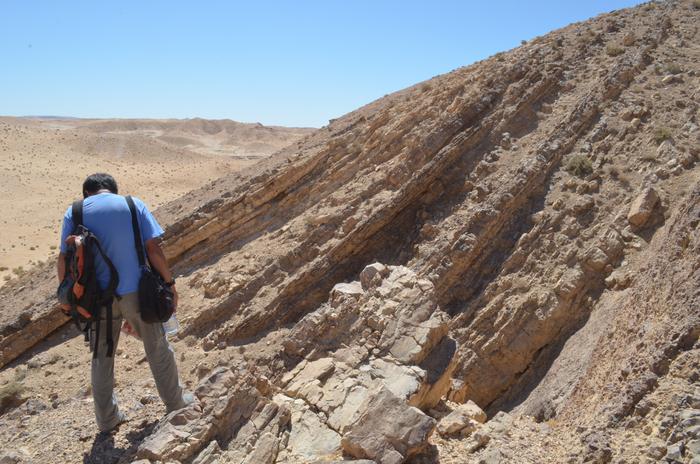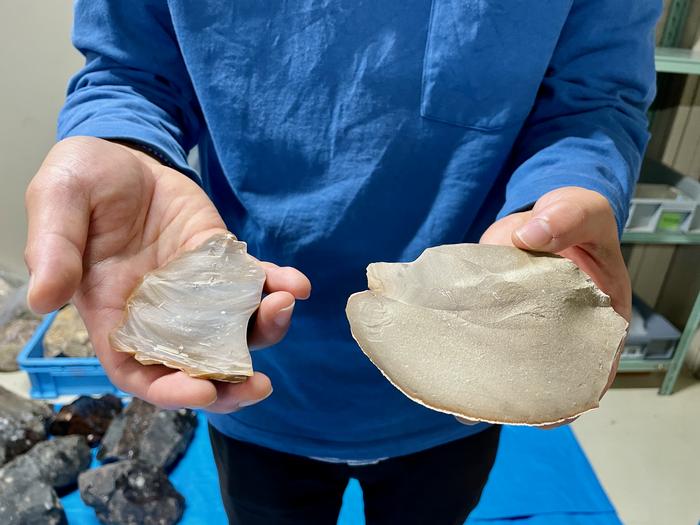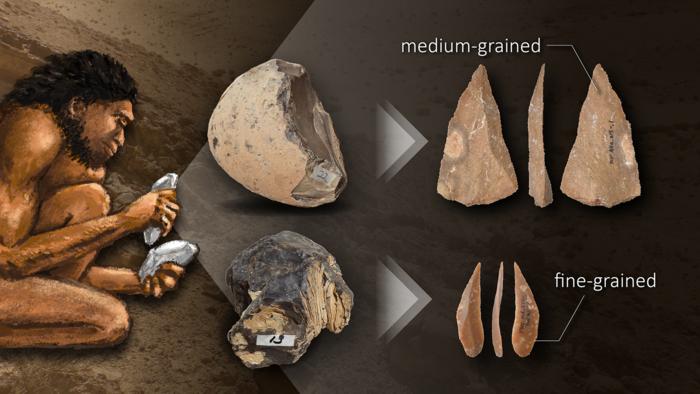Paleolithic humans may have understood the properties of rocks for making stone tools
A research group led by the Nagoya University Museum and Graduate School of Environmental Studies in Japan has clarified differences in the physical characteristics of rocks used by early humans during the Paleolithic. They found that humans selected rock for a variety of reasons and not just because of how easy it was to break off. This suggests that early humans had the technical skill to discern the best rock for the tool. The researchers published the results in the Journal of Paleolithic Archaeology.
As Homo sapiens moved from Africa to Eurasia, they used stone tools made of rocks, such as obsidian and flint, to cut, slice, and craft ranged weapons. Because of the significant role they played in their culture, understanding how early humans made stone tools is important to archaeologists.
Since the geographic expansion of Homo sapiens in Eurasia started in the Middle East, archaeologists Eiki Suga and Seiji Kadowaki from Nagoya University focused on the prehistoric sites belonging to three chronological periods in the Jebel Qalkha area, southern Jordan. The team analyzed flint nodules in the outcrops that were exploited during the Middle and Upper Paleolithic (70,000 to 30,000 years ago).

The research team focused on prehistoric sites and raw material sources (outcrops) in the Jebel Qalkha area, southern Jordan (photo). Credits: Professor Seiji Kadowaki
They believe Paleolithic humans understood which rocks were appropriate for making tools and, therefore, intentionally searched for them. According to their hypothesis, Paleolithic humans intentionally searched for flint that was translucent and smooth, as it could be easily broken off the rock face and shaped into sharp edges.
The group used a Schmidt Hammer and a Rockwell Hardness Device to test the mechanical properties of the rocks. The Schmidt Hammer measures the elastic behavior of a material after the hammer strikes it, which tells researchers its rebound hardness. The Rockwell hardness device presses a diamond indenter on the rock surface to test its strength.

At first, as Suga and Kadowaki expected, fine-grained flint was found to require less force to fracture than medium-grained flint. This would have made the fine-grained flint more attractive in producing small stone tools. Indeed, many stone tools from the Early Upper Paleolithic (40,000 to 30,000 years ago) contain fine-grained flint.
However, an earlier study by the same team found that during the Late Middle Paleolithic and the Initial Upper Paleolithic (70,000 to 40,000 years ago), medium-grained flint was more commonly used in stone tools than fine-grained flint. But if fine-grained flint was so easy to use, why did our ancestors not make all their tools from it?
On further investigation, the researchers found that much of the fine-grained flint in the area suffered from abundant internal fractures caused by geological activities, which would have made it unsuitable for large stone tools, such as Levallois products and robust blades. Therefore, it seems that Paleolithic humans selected the medium-grained flint for large tools, even though it was a tough material to modify into tools, as it was more likely to last longer. This offers a fascinating insight into our ancestors’ behavior, as they selected flint based on many factors other than just how easy it was to fracture and could discern the most suitable rock to use to make stone tools.

Suga is enthusiastic about the findings, which suggest the complexity of our ancestors’ behaviour.
“This study illustrates that the Paleolithic humans changed their choice of raw material to suit their stone tool morphologies and production techniques,” he said. “We believe that these prehistoric humans had a sensory understanding of the characteristics of the rocks and intentionally selected the stone material to be used according to the form and production technique of the desired stone tools. This intentional selection of the lithic raw material may have been an important component of the production of stone tools. This may show some aspect of flexible technological behavior adapted to the situation.”
“There are still many unanswered questions about why extant humans expanded their distribution 50,000 to 40,000 years ago. Recently, ancient DNA analysis showed that modern humans (Homo sapiens) interacted and interbred with Neandertals and Denisovans. However, ancient DNA cannot tell us about the actual historical events and how they occurred,” Suga said. “If we want to know what happened that allowed Homo sapiens to thrive, we need to study cultural remains, such as stone tools, excavated from archaeological sites. This kind of resource use is an important record for elucidating the evolution of human technological behavior, environmental adaptation, and the process of population growth at that time.”
Bibliographic information:
Explaining the Increase in “High-quality Chert” in the Early Upper Paleolithic Artifacts in Southern Jordan: Quantitative Examination of Chert Mechanical Properties and Fracture Predictability, Journal of Paleolithic Archaeology (8-Nov-2023), DOI: 10.1007/s41982-023-00164-w
Press release from Nagoya University.


